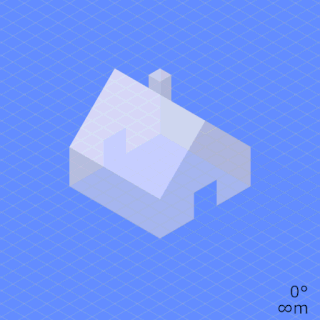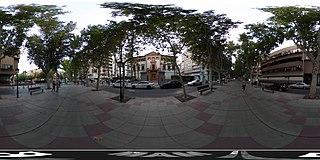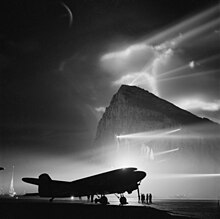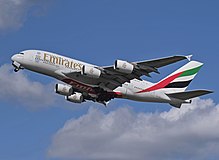
A single-lens reflex camera (SLR) is a camera that typically uses a mirror and prism system that permits the photographer to view through the lens and see exactly what will be captured. With twin lens reflex and rangefinder cameras, the viewed image could be significantly different from the final image. When the shutter button is pressed on most SLRs, the mirror flips out of the light path, allowing light to pass through to the light receptor and the image to be captured.

A view camera is a large-format camera in which the lens forms an inverted image on a ground-glass screen directly at the film plane. The image is viewed, composed, and focused, then the glass screen is replaced with the film to expose exactly the same image seen on the screen.

A twin-lens reflex camera (TLR) is a type of camera with two objective lenses of the same focal length. One of the lenses is the photographic objective or "taking lens", while the other is used for the viewfinder system, which is usually viewed from above at waist level.

In photography, shutter speed or exposure time is the length of time that the film or digital sensor inside the camera is exposed to light when taking a photograph. The amount of light that reaches the film or image sensor is proportional to the exposure time. 1⁄500 of a second will let half as much light in as 1⁄250.

Underwater photography is the process of taking photographs while under water. It is usually done while scuba diving, but can be done while diving on surface supply, snorkeling, swimming, from a submersible or remotely operated underwater vehicle, or from automated cameras lowered from the surface.

Aerial photography is the taking of photographs from an aircraft or other airborne platforms. When taking motion pictures, it is also known as aerial videography.

In photography and cinematography, perspective distortion is a warping or transformation of an object and its surrounding area that differs significantly from what the object would look like with a normal focal length, due to the relative scale of nearby and distant features. Perspective distortion is determined by the relative distances at which the image is captured and viewed, and is due to the angle of view of the image being either wider or narrower than the angle of view at which the image is viewed, hence the apparent relative distances differing from what is expected. Related to this concept is axial magnification – the perceived depth of objects at a given magnification.

Macro photography is extreme close-up photography, usually of very small subjects and living organisms like insects, in which the size of the subject in the photograph is greater than life-size . By the original definition, a macro photograph is one in which the size of the subject on the negative or image sensor is life-size or greater. In some senses, however, it refers to a finished photograph of a subject that is greater than life-size.

Aerial survey is a method of collecting geomatics or other imagery by using airplanes, helicopters, UAVs, balloons or other aerial methods. Typical types of data collected include aerial photography, Lidar, remote sensing and also geophysical data (such as aeromagnetic surveys and gravity. It can also refer to the chart or map made by analysing a region from the air. Aerial survey should be distinguished from satellite imagery technologies because of its better resolution, quality and atmospheric conditions. Today, aerial survey is sometimes recognized as a synonym for aerophotogrammetry, part of photogrammetry where the camera is placed in the air. Measurements on aerial images are provided by photogrammetric technologies and methods.
In photography, through-the-lens metering refers to a feature of cameras whereby the intensity of light reflected from the scene is measured through the lens; as opposed to using a separate metering window or external hand-held light meter. In some cameras various TTL metering modes can be selected. This information can then be used to set the optimal film or image sensor exposure, it can also be used to control the amount of light emitted by a flash unit connected to the camera.

Portrait photography, or portraiture, is a type of photography aimed toward capturing the personality of a person or group of people by using effective lighting, backdrops, and poses. A portrait photograph may be artistic or clinical. Frequently, portraits are commissioned for special occasions, such as weddings, school events, or commercial purposes. Portraits can serve many purposes, ranging from usage on a personal web site to display in the lobby of a business.

Sports photography refers to the genre of photography that covers all types of sports.

A remote camera, also known as a trail camera or game camera, is a camera placed by a photographer in areas where the photographer generally cannot be at the camera to snap the shutter. This includes areas with limited access, tight spaces where a person is not allowed, or just another angle so that the photographer can simultaneously take pictures of the same moment from different locations.

VR photography is the interactive viewing of panoramic photographs, generally encompassing a 360-degree circle or a spherical view. The results is known as VR photograph, 360-degree photo, photo sphere, or spherical photo, as well as interactive panorama or immersive panorama.

Banquet photography is the photography of large groups of people, typically in a banquet setting such as a hotel or club banquet room, with the objective of commemorating an event. Clubs, associations, unions, circuses and debutante balls have all been captured by banquet photographers.
Architectural photography is the subgenre of the photography discipline where the primary emphasis is made to capturing photographs of buildings and similar architectural structures that are both aesthetically pleasing and accurate in terms of representations of their subjects. Architectural photographers are usually skilled in the use of specialized techniques and cameras for producing such specialized photography.

An ultra wide-angle lens is a lens whose focal length is shorter than that of an average wide-angle lens, providing an even wider view. The term denotes a different range of lenses, relative to the size of the sensor in the camera in question.

Landscape photography shows the spaces within the world, sometimes vast and unending, but other times microscopic. Landscape photographs typically capture the presence of nature but can also focus on human-made features or disturbances of landscapes. Landscape photography is done for a variety of reasons. Perhaps the most common is to recall a personal observation or experience while in the outdoors, especially when traveling. Others pursue it particularly as an outdoor lifestyle, to be involved with nature and the elements, some as an escape from the artificial world.

Air-to-air photography is the art of photographing aircraft in the air, by using another aircraft as a photo platform. It is especially popular among military aircraft photographers and aerobatic pilots flying at air shows.
Aerial reconnaissance using heavier-than-air machines was an entirely new science that had to be improvised step-by-step. Early operations were low-level flights with the pilot often dismounting from the plane to report verbally to the nearest officers. Photographic support was urgently developed, initially requiring a full-time photographer on board to handle the heavy, awkward equipment. The interpreting of aerial images was an important new speciality, essential for accurate mapping. By 1915, air-to-ground radio was in use for reconnaissance pilots.























